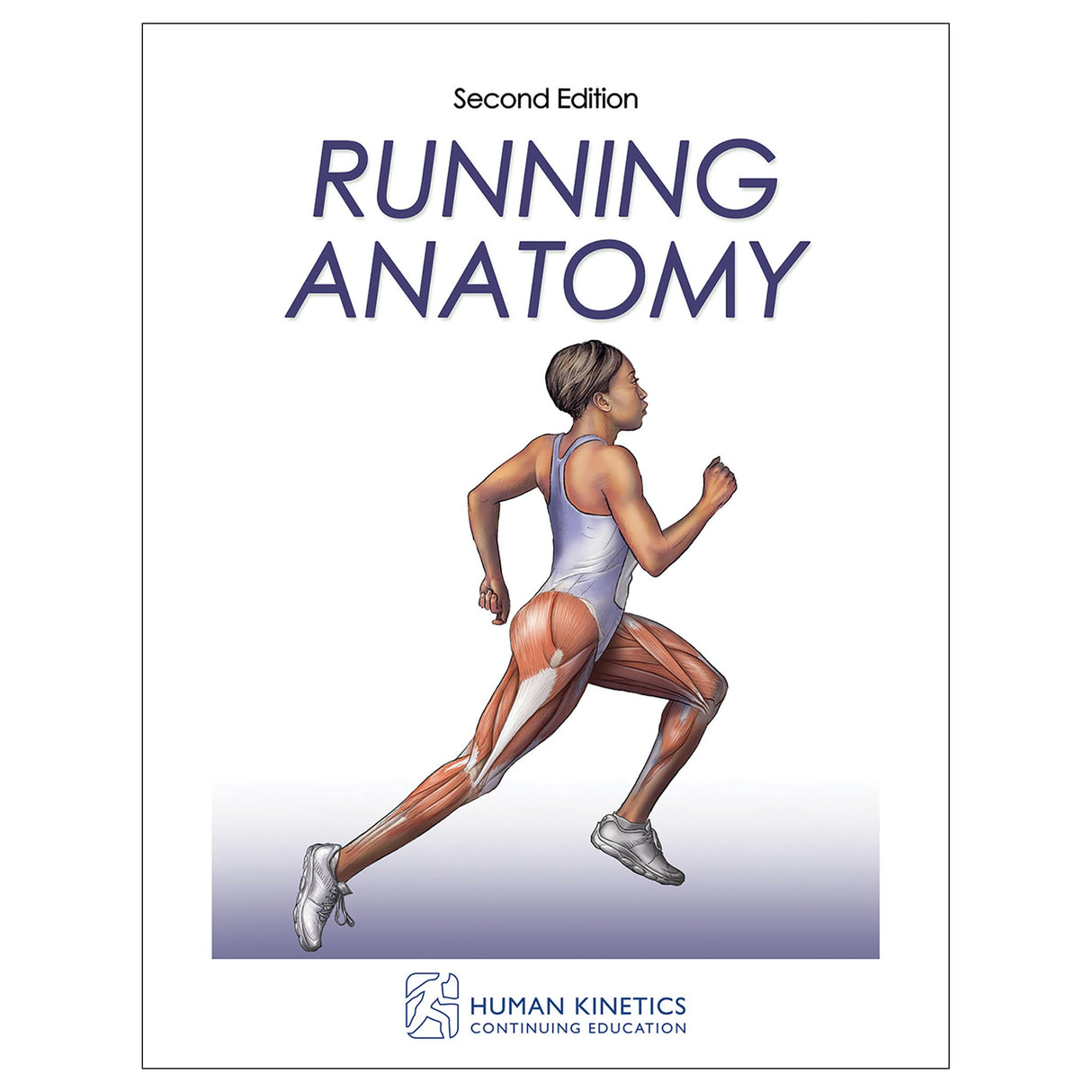Running Anatomy 2nd Edition Online CE Exam With Print Book
Author: Human Kinetics
$79.00 USD
Human Kinetics strongly recommends that you complete your exam within the calendar year of your date of purchase to ensure approved credits do not expire for your organization.
- Running Anatomy, Second Edition, book
- Online continuing education exam
Running Anatomy features 48 of the most effective strength exercises for runners, each with clear step-by-step descriptions and full-color anatomical illustrations highlighting the muscles in action. Each illustration helps you better understand how muscles, ligaments, and tendons all work together as the body moves.
Running Anatomy clearly links each exercise to running performance. You’ll see how to strengthen specific muscles and improve gait efficiency for faster times and more fluid runs. Plus you’ll learn how to eliminate anatomical imbalances that can lead to the most common injuries that runners face, including plantar fasciitis, lower-back pain, knee aches and strains, and torn muscles and tendons.
You’ll find variations to train clients for every condition and competition—for various terrains, speeds, elevations, and distances, from sprint to marathon. You’ll also learn how new gear and technology-enhanced equipment can maximize training and performance.
After reading the book, certified professionals can take the companion CE exam to earn continuing education credits.
Learning Objectives
- Describe physiological adaptations to training for running.
- Analyze the biomechanics of running.
- Understand how environmental factors affect running training.
- Explain appropriate remedies for common running injuries.
- Determine effective strengthening exercises for runners.
- Describe the importance of alternative forms of training for runners.
Audience
Personal trainers and other certified fitness and strength and conditioning professionals working with runners.Chapter 2. Training Concepts
Chapter 3. External Factors That Affect Performance
Chapter 4. Feet and Ankles
Chapter 5. Legs
Chapter 6. Core
Chapter 7. Shoulders and Arms
Chapter 8. Chest and Back
Chapter 9. Injury Prevention
Chapter 10. Alternative Training Activities
Chapter 11. Gear and Advancements





